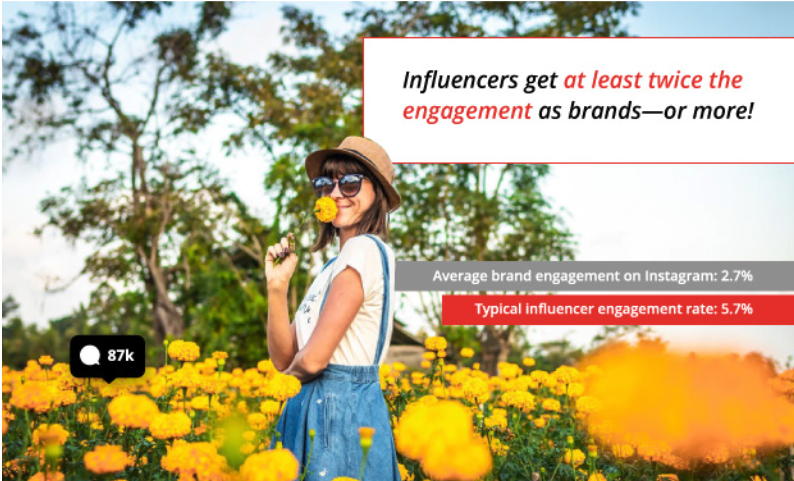Influencer marketing has a long history, but it only recently scaled with the rise of social media. The days when influence was solely held by gatekeepers are far gone. During the last decade, we have seen the emergence of a new wave of influencers who create and distribute content that reaches audiences through a variety of channels.
With the advent of a mobile-dominating era, digital marketing spend has increased exponentially. Influencer marketing has positioned itself as the fastest-growing online customer-acquisition method.
Let’s take a look at a few of the most mind-blowing statistics underscoring the influencer marketing industry growth and maturity.
1. 60 percent of YouTube subscribers trust influencers more than TV and movie personalities
To many people, an influencer provides the most compelling and persuasive insight about a product or service. Digital creators are also widely seen as more credible than celebrities, likely because there’s less reason to believe they’re simply accepting a gig to insincerely pitch something. Similarly, almost 9 in 10 consumers feel that an online review by a stranger is as trustworthy as a recommendation from a friend.
2. Influencers get at least twice the engagement as brands
The trust consumers place in influencers is reflected in the superior engagement the latter achieve on the major channels compared to official brand accounts. The typical influencer engagement rate is 5.7 percent. For comparison, that’s more than double the 2.7 percent rate that brands averaged on Instagram from 2017 to 2018. Authenticity is an important driver of this gap, as influencers are often seen as highly reputable.
3. Over 60 percent of marketers increased their influencer marketing budgets in 2018
Influencer marketing is attracting significant investment from companies keen to build brand awareness and drive conversions. Sixty-two percent of marketers increased their budgets for influencer marketing this year, while 61 percent of influencers reported a rise in sponsorship opportunities.
4. Total spending on influencer marketing could reach $10 billion by 2022
Influencer marketing offers strong ROI, in some cases more than tenfold the engagement or traffic as a traditional marketing campaign. It’s no surprise, then, that overall spending on it continues to climb. Total expenditures on influencer marketing could range from $5 billion to $10 billion in 2022, which even at the midpoint of $7.5 billion would represent an impressive 37 percent compound annual growth rate.
5. Consumers engage with more than 11 pieces of content before making a purchase
That’s a lot – as well as a bunch of junctures at which influencer marketers can make a difference on what customer end up purchasing. At different stages in the customer journey, an influencer can provide anything from initial inspiration about what to buy (e.g., through a curated set of products on Pinterest) to additional background for consideration, such as a tutorial video posted to YouTube. Reputable influencers can help shape purchase decisions in a way that direct brand ads, TV commercials, and “you might also like…” suggestions – in fact, a recommendation from a trusted source is the strongest influence on a purchase aside from a discount or coupon.
6. Engagement is still the number one metric for evaluating influencer campaigns
There are many ways to measure ROI. In 2018, the number one preferred metric was engagement (cited by 90 percent of marketers), followed by traffic and clicks. Reach, conversions, product sales, and audience sentiment rounded out the list of top metrics.
Contact us today to learn more about how influencer marketing can help your business all the way through the sales funnel!






